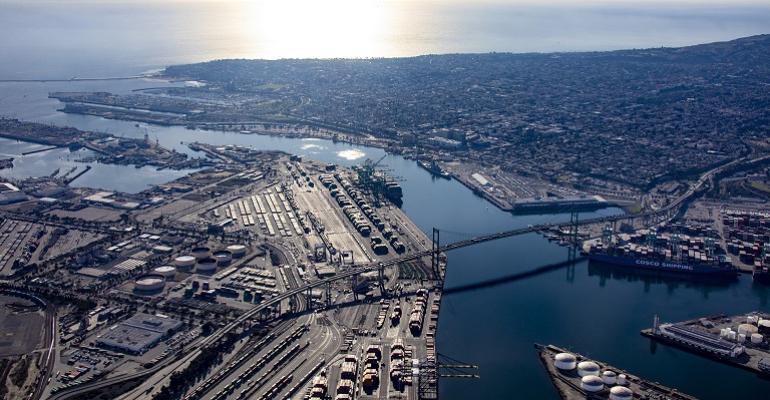The Port of LA handled 726,014 teu in January 2023 down 13% on the same month a year ago.
For January 2023 loaded imports handled came in at 372,040 teu, down 13% compared to the previous year. Loaded were up slightly at 102,723 teu, an increase of 2.5% compared to last year. While the handling of empty containers saw a sharp drop to 251,251 teu, a 26% year-on-year decline.
Port of LA Executive Director, Gene Seroka, said that with a slowdown in cargo the port would be keeping an eye on vessel utilisation rates as while it handled 16% less boxes in January 2023 than a year earlier the same number of ships called at its terminals.
“That kind of statistic, combined with the 17 cancelled sailings that we saw in January tells us that we can expect more blank sailings in the weeks and months ahead,” he said.
Seroka said the port is expecting a continued slowdown from the Transpacific trade in the months ahead. “Looking into February, we'll see a significant volume decline and a softer market heading into quarter two,” he said.
Factors behind this slowdown included extended factory shutdowns of up 30 days around Lunar New Year, warehouses in the US remained full, and rising interest rates dampening consumer spending.
Fellow San Pedro Bay facility the Port of Long Beach had already reported a 28.7% year-on-year drop in volumes for January, handling 573,772 teu for the month in 2023. It blamed lower volumes on softer consumer spending, increased prices due to inflation, and a shift in trade routes which has seen more cargo move via US East Coast ports.
Copyright © 2024. All rights reserved. Seatrade, a trading name of Informa Markets (UK) Limited.
Add Seatrade Maritime News to your Google News feed.  |

